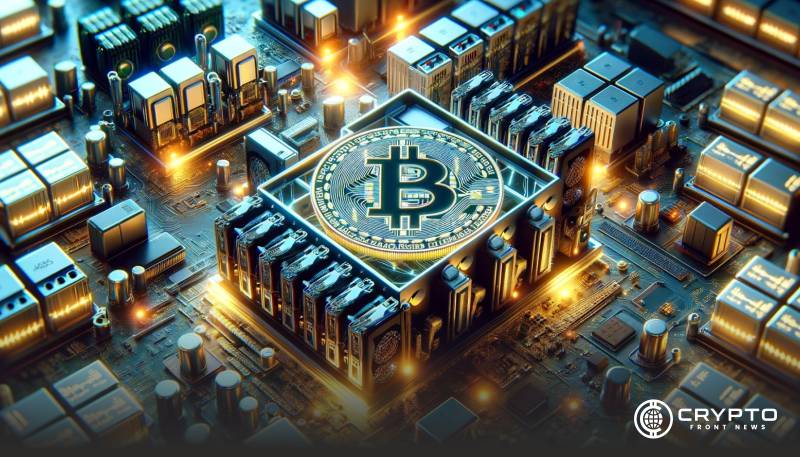 CaryptosHeadlines Media Has Launched Its Native Token CHT.
Airdrop Is Live For Everyone, Claim Instant 5000 CHT Tokens Worth Of $50 USDT.
Join the Airdrop at the official website,
CryptosHeadlinesToken.com
CaryptosHeadlines Media Has Launched Its Native Token CHT.
Airdrop Is Live For Everyone, Claim Instant 5000 CHT Tokens Worth Of $50 USDT.
Join the Airdrop at the official website,
CryptosHeadlinesToken.com
- High-energy crypto and AI centers must abide by annual emissions reductions of 11% under the Clean Cloud Act, with penalties for non-compliance.
- 25 percent of penalty revenue will go to help low-income families with electricity, with excess proceeds funding clean energy programs.
- Data centers and cryptocurrency mining currently consume 4% of US electricity, and by 2028 it is expected to reach as high as 12%, which requires cleaner alternatives.
Senators Sheldon Whitehouse and John Fetterman have introduced the Clean Cloud Act of 2025 to regulate emissions from crypto mining and AI data centers. The legislation sets performance standards and financial penalties for facilities relying on non-renewable power after 2035.
New Standards for High-Power Facilities
The Clean Cloud Act targets data centers and crypto mining operations with over 100 kilowatts of installed IT power. These facilities would need to meet annual emissions targets based on regional grid intensities, reduced by 11% each year. Facilities emitting above the set standard would be fined, starting at $20 per ton of carbon dioxide equivalent, with increases tied to inflation and an additional $10 yearly.
Senator Whitehouse stated that the energy demand from these facilities is straining the power grid, raising costs for consumers, and driving up fossil fuel emissions. He called on the technology and crypto sectors to fund clean energy solutions rather than relying on older, high-emission sources.
The bill enforces strict energy accountability through three key measures—incrementality, deliverability, and hourly matching. These would prevent crypto and AI firms from using existing clean energy credits without supporting new energy production.
Revenue Allocation and Grid Reliability Goals
Under the bill, 25% of revenue collected from penalties would go toward helping low-income families manage utility bills. The remaining funds would support grants for long-duration storage technologies and clean firm generation, with the goal of creating a stable and sustainable energy grid.
Senator Fetterman described the bill as a balanced approach that protects both technological growth and environmental quality. He emphasized that the legislation supports cleaner energy use without slowing innovation in AI or blockchain technologies.
Energy demand from crypto mining and AI operations is expected to grow rapidly. Data centers now use 4% of U.S. electricity and could rise to 12% by 2028. This trend has already led to the revival of retired coal plants in some areas to meet demand.
Broad Support From Energy and Labor Organizations
Groups that have supported the bill include the Utility Workers Union of America, Public Citizen, and EnergyTag. Utility Workers President James Slevin spoke out against the growing burden put onto the electric grid, embracing new measures to control demand.
Alex Piper of EnergyTag praised the bill for advancing hourly energy tracking standards. He stressed the need for reliable metrics that align with real-time grid use, calling the legislation an essential step for responsible infrastructure expansion in the U.S.








 LATEST: Democratic Senators Sheldon Whitehouse and John Fetterman have introduced the “Clean Cloud Act of 2025.”
LATEST: Democratic Senators Sheldon Whitehouse and John Fetterman have introduced the “Clean Cloud Act of 2025.”


